Canada’s infrastructure projects take off while U.S. plans sputter

OTTAWA, Canada – Six weeks ago, Prime Minister Justin Trudeau traveled to Montreal to announce that his government would be investing 1.3 billion Canadian dollars in a new commuter train network for the city, Canada’s second-largest.
It was the usual political event, with Quebec’s provincial premier and Montreal’s mayor in attendance. But sharing the stage with the politicians was Michael Sabia, president of Caisse de Diptt et Placement du Quibec, the province’s giant pension-fund manager.
Sabia was there because Caisse de Diptt, the equivalent of the California Public Employees’ Retirement System, is spearheading construction of the $6 billion, 42-mile light-rail network and will own 51 percent of the system when it starts operating as planned in 2020. And it expects to make a decent return on the venture.
The decision by one of the country’s biggest pension-fund managers to take the lead in developing a transit system from scratch is part of Canada’s effort to tackle its infrastructure problems with a two-pronged approach: increasing direct government spending while encouraging the private sector and state-controlled institutional investors such as Caisse de Diptt to put cash into projects of the magnitude of Riseau Electrique Mitropolitain, or Metropolitan Electric Network, as the Montreal system will be known.
While President Donald Trump’s campaign pledge to jump-start reconstruction of U.S. highways, bridges and water systems with a $1 trillion infrastructure plan is stalled, the Canadian government is pushing ahead with its program, including the controversial establishment of a Canada Infrastructure Bank. The bank, which was recently approved by Parliament, is due to start operating by year’s end with seed money of $35 billion.
Trudeau’s Liberal Party campaigned ahead of its 2015 electoral win on increasing Canada’s federal deficit through targeted investment, particularly in infrastructure, and has since promised to spend $180 billion over the next 11 years, with an emphasis on local transit, transportation and affordable housing. Much of the money will go to projects jointly funded with provinces and municipalities.
Canada and the United States face some of the same problems, and one of the most pressing is senescent infrastructure that is failing to keep pace with each country’s growing economy and expanding population. According to the World Economic Forum’s Global Competitiveness Report, Canada ranks 21st in the quality of its infrastructure. The United States – while well ahead of it at 12th place – is far from the top. Switzerland is No. 1, followed by Singapore.
“A lot of the infrastructure (in Canada and the United States) was built in the 1970s and the 1980s, and it’s aging,” said Craig Alexander, chief economist of the Conference Board of Canada. “There’s an infrastructure deficit.”
Alexander cites several examples. Among the most striking: the fact that 25 percent of the value of Canada’s trade with the United States flows over a single span, the 88-year-old Ambassador Bridge linking Detroit and Windsor, Ontario. (A new Canadian-funded toll bridge is under construction nearby.) Traffic congestion around Toronto, in Canada’s booming heartland, is so bad that it’s constraining growth. And capacity shortfalls at the port of Vancouver are so acute that Canadian exporters are diverting traffic to Seattle.
With an aging population, infrastructure investments are even more important because they can boost competitiveness even as growth slows in the labor force, he added.
Alexander gives the Trudeau government high marks for encouraging broader sources of funding for infrastructure projects such as bridges, highways and ports, which can pay their own way through tolls and other user fees.
“Trying to crowd in private sector investment is a great idea,” he said. “It makes infinite sense because the government doesn’t have enough money to invest in all the projects that have merit.”
Canada’s big pension plans, such as the private Ontario Teachers’ Pension Plan and the state-controlled Canada Pension Plan Investment Board, have become world leaders in infrastructure investments, buying up toll roads in the United States, airports in the United Kingdom and ports in Australia to diversify from stocks and bonds in a low-interest environment.
But they’ve so far been reluctant to invest in similar Canadian projects, in part because of a shortage of opportunities. The new infrastructure bank is supposed to help fill that gap by matching projects at the municipal, provincial and federal levels with private-sector investors.
Although infrastructure spending is popular with Canadian voters, the establishment of the infrastructure bank has proved divisive. The Conservative Party worries that it will saddle taxpayers with extra debt, while the left-of-center New Democratic Party opposed the measure on the grounds that it would allow private interests too much sway.
Although the public generally favors more investment in infrastructure, big hurdles remain, including resistance to privatization. The federal government has been talking of selling off Canada’s biggest airports, currently run by local authorities, to investors, but airlines and passengers are worried it will lead to higher landing fees and more expensive airfares.
When the Ontario government recently sold off part of its stake in Hydro One, the provincial electric distribution network, markets cheered. But voters were not impressed, according to public opinion polls, worrying that the move will lead to higher power rates.
Meanwhile, the Trudeau government is pressing ahead with construction of a $4 billion bridge to replace the rapidly deteriorating Champlain Bridge across the St. Lawrence River at Montreal. The previous government insisted that it should be financed in part by tolls, but Trudeau promised it would be free if he won the election. He did, and the new bridge, due to open next year, will be toll-free.
Bob Blakely, chief operating officer of the Canadian Building Trades Council, the Canadian arm of the U.S.-based NABTU, says he thinks Canada is ahead of the United States when it comes to tackling the infrastructure deficit.
“There’s lots of talk about infrastructure spending” in Washington, he said. “But the kinetic isn’t there.”